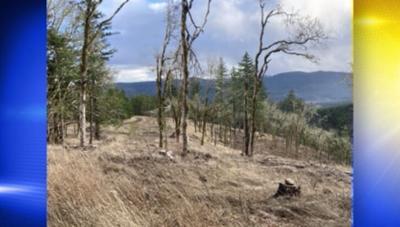CORVALLIS, Ore. – Oregon State University researchers have identified the primary factor in a forest that allows trees to combat greenhouse gas emissions and will allow for more sustainable timber practices, the college said.
OSU officials said that a recent study of the McDonald-Dunn Research Forest found that a forest’s productivity level, referring to how fast trees grow and how much biomass they accumulate, plays the biggest role in determining the time between timber harvests. This information will allow timber industries and researchers to maximize reduction of carbon-dioxide in the atmosphere while maintaining forests, OSU said.
“Whether short or long harvest rotations are better for maximizing carbon sequestration has been the subject of considerable debate,” said Catherine Carlisle, who led the study as a graduate student at OSU’s College of Forestry. “Future management decisions will need to strive to meet harvest requirements while also striving to maintain high rates of carbon sequestration.”
Forests in the Pacific Northwest region span nearly 25 million acres and are amongst the most productive in the world, according to the authors of the report. OSU officials said the McDonald-Dunn Research Forest is an 11,000-acre woodland that’s owned and managed by OSU’s College of Forestry and consists primarily of Douglas fir. It is located north of Corvallis in the eastern foothills of the Coast Range, OSU officials said.
The college said the researchers’ findings provide key information for forest managers seeking a balance between timber harvests and carbon sequestration. Carbon trapped in woody biomass of U.S. forests offsets 13% of the nation’s greenhouse gas emissions, OSU officials said.
“Some forest scientists have argued that multiple but shorter rotations lead to greater sequestration rates because of the accelerated growth rates of younger trees compared to mature or old-growth trees,” said Carlisle. “Others say frequent harvesting won’t allow forest carbon to rebound after each subsequent rotation, and thus longer periods between clearcutting are a better choice. And depending on who you ask, thinning will either enhance forest carbon uptake by facilitating growth in residual trees, or hurt it by removing above-ground biomass.”
OSU scientists found that over a projected 240-year time frame 60-year rotations with low-intensity thinning at 40 years led to the greatest carbon storage, college officials said.














